
Music is more than just sound; it's a universal language that transcends borders and generations, deeply influencing societies and cultures across the globe. The impact of music on society is profound, shaping everything from social movements to personal identities. In particular, music in American culture has been a driving force for innovation, blending diverse influences to create new genres that resonate worldwide. Meanwhile, cultural music around the world offers unique insights into the values and histories of different communities, preserving traditions through sound. By exploring music culture examples from various regions, we gain a deeper understanding of humanity's shared love for rhythm and melody.
The Impact of Music on Society
Music holds an undeniable power that transcends mere entertainment, deeply influencing the fabric of society in ways both subtle and profound. From shaping cultural norms to inspiring societal change, the impact of music on society has been a constant force throughout human history. Its influence extends across emotions, behavior, and thought processes, affecting individuals and communities alike. Whether it is through the rhythms that move us, the lyrics that resonate, or the melodies that evoke memories, music remains one of the most powerful cultural forces.
The Power of Music to Unite Society
One of the most significant aspects of the impact of music on society is its ability to foster social cohesion. Throughout history, music has been a communal activity—people gathered to sing, dance, and play instruments together, creating bonds within societies. In modern times, music continues to play this role, bringing people together at concerts, festivals, and other public gatherings. In these spaces, music becomes a shared experience, allowing individuals to feel connected to something larger than themselves. Whether at a stadium concert or a small local venue, music builds community by providing a common language that transcends boundaries of race, age, and class.
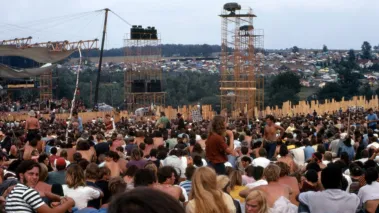
Moreover, music is often at the heart of social movements, serving as a rallying cry for change. Historically, songs have been used as tools for activism, from the Civil Rights movement to anti-war protests. The "freedom songs" of the 1960s, for example, gave voice to the struggles of African Americans seeking equality. These songs weren’t just artistic expressions—they were catalysts for social action, uniting people in a shared cause and strengthening the resolve of those fighting for justice. The power of these songs lies in their ability to evoke strong emotional responses, galvanizing people to take action.
Using Music to Shape Identity and Emotional Connection
The impact of music on society also manifests in the way it shapes identity. Music provides a means of self-expression, allowing individuals to communicate emotions and ideas that may be difficult to articulate through words alone. For many, the music they listen to becomes a key component of their personal identity. Genres such as punk, hip-hop, and heavy metal, for instance, have created subcultures with their own values, fashion, and attitudes. People who identify with these genres often form tight-knit communities, bonded by their shared love of the music and what it represents. In this way, music fosters not only individual identity but also a collective one.
Additionally, the emotional impact of music on society cannot be overlooked. Music has a profound effect on the human brain, influencing mood and behavior. Research has shown that listening to music can trigger the release of dopamine, a neurotransmitter associated with pleasure and reward. This explains why music has such a powerful emotional effect—it can uplift, inspire, comfort, and soothe. Whether it’s the euphoria of a high-energy dance track or the introspection prompted by a melancholic ballad, music has the power to alter emotional states and influence behavior.
One of the most fascinating elements of the impact of music on society is its ability to shape perceptions. The lyrics and themes found in popular music often reflect societal norms and values, but they can also challenge them. For example, music with politically charged messages has historically been used to critique government policies, question authority, and bring attention to social issues such as inequality and injustice. Songs like “Strange Fruit,” which protested the horrors of lynching in America, or “Fight the Power,” which spoke out against racial oppression, have been instrumental in raising awareness and prompting discourse on difficult topics. In this way, music not only mirrors society but also has the potential to shape and shift public opinion.
Music’s Influence on Mental Health
Another critical aspect of music's influence is its role in mental health and well-being. Music therapy is now widely recognized as a powerful tool in the treatment of various psychological conditions, from anxiety to depression. The emotional and psychological impact of music on society extends beyond entertainment, offering a means of healing and self-care. For individuals dealing with stress, trauma, or mental illness, music can serve as a therapeutic outlet, providing comfort and relief from emotional pain. Furthermore, studies have shown that music can improve cognitive function and enhance learning, particularly in children, underscoring its role in education and development.

The widespread availability of music today, largely thanks to the rise of streaming platforms and social media, has further amplified its societal impact. Music is more accessible than ever, allowing people from all corners of the globe to connect over shared tastes and experiences. This democratization of music has led to the emergence of new voices and genres, allowing marginalized groups to share their stories and perspectives with a global audience. As a result, music continues to be a powerful vehicle for social change, enabling artists to address pressing issues such as racial inequality, gender discrimination, and environmental degradation.
However, it’s also important to recognize that the impact of music on society is not always positive. Certain types of music, particularly those with violent or misogynistic themes, can contribute to harmful attitudes and behaviors. Studies have shown that repeated exposure to aggressive or sexually explicit lyrics can reinforce negative stereotypes and promote unhealthy behaviors, especially among impressionable young listeners. This highlights the need for critical engagement with the music we consume, recognizing its power to shape not only individual behavior but also societal values.
Music in American Culture
Music has been an essential part of American culture from the nation’s earliest days, continuously evolving alongside its diverse population. The United States, being a melting pot of various ethnicities, cultures, and traditions, has created a unique musical landscape that reflects its rich history and dynamic social fabric. From the folk traditions brought over by European settlers to the innovations in jazz, blues, and rock that emerged from African American communities, music in American culture is a complex tapestry that highlights the country’s diverse influences and ongoing societal shifts.
Folk and Early Influences
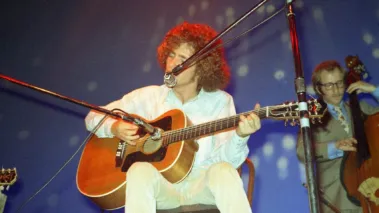
The Birth of American Music
One of the earliest significant contributions to music in American culture was the development of folk music. Early American folk songs were heavily influenced by the music traditions brought by immigrants from Europe, especially the British Isles. Songs of labor, love, and loss resonated with the working-class immigrants who settled in rural areas. Folk music became a vehicle for storytelling, providing a means for people to pass down stories, history, and values across generations.
In the Appalachian Mountains, a region deeply rooted in folk traditions, musical styles began to form that would later influence genres like bluegrass and country. The interplay of European melodies with the rhythms and instruments of African slaves, such as the banjo, created new sounds that reflected the social fabric of the time. This synthesis of different cultural traditions helped birth what we now know as American roots music.
Simultaneously, Native American music continued to thrive, maintaining its distinct character with drums, flutes, and vocal performances being integral to tribal ceremonies and storytelling. Although marginalized by colonial expansion, Native American music still plays a vital role in the country's cultural heritage, contributing to the overall diversity of American music.
Jazz and the Blues
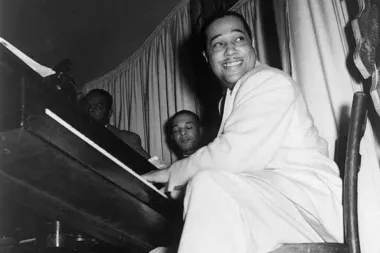
The Foundations of Modern American Music
As the 19th century progressed, African Americans made one of the most profound contributions to music in American culture. Born out of the suffering and resilience of enslaved people, spirituals, blues, and later, jazz, would go on to revolutionize music on a global scale. The blues, in particular, arose from the deep emotional pain of African American communities, providing a form of expression for those facing racial injustice and hardship. As jazz developed in New Orleans at the turn of the 20th century, it brought together musicians of all backgrounds, mixing European instruments and African rhythms, improvisation, and complex harmonies.
Jazz and the blues transcended racial lines, becoming the first truly American genres. Artists like Louis Armstrong, Duke Ellington, and Billie Holiday embodied the power of music to break down racial barriers, with audiences from all races appreciating the artistry of these performers. Despite the segregation of the time, music in American culture offered a glimpse into the possibility of unity and shared cultural expression.
The influence of these genres was far-reaching. Jazz, often seen as America’s classical music, laid the groundwork for many future styles, including rhythm and blues, rock ‘n’ roll, and hip-hop. The improvisational nature of jazz allowed musicians to express themselves in new and innovative ways, making it one of the most influential forms of music in American culture.
Rock 'n' Roll and R&B
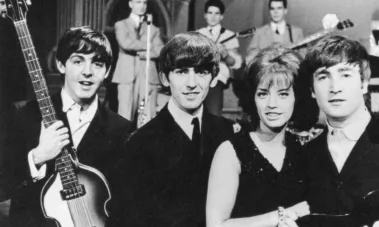
The Evolution of Popular Music
The mid-20th century saw the emergence of rock ‘n’ roll, a genre that would forever change the landscape of music in American culture. Taking inspiration from the blues and jazz, rock ‘n’ roll exploded onto the scene with artists like Chuck Berry, Elvis Presley, and Little Richard, whose energetic performances and catchy tunes captivated teenagers across the country. Rock ‘n’ roll wasn’t just music; it was a cultural movement. It represented rebellion, freedom, and a break from the conservative norms of the time.
With the rise of television and radio, rock ‘n’ roll reached mass audiences, influencing fashion, dance, and lifestyle. Teenagers in the 1950s and 1960s embraced this music as their own, creating a generational divide that had never been seen before. This shift in musical taste and culture mirrored the social changes of the time, as civil rights movements gained momentum and young people challenged societal norms.
In tandem with rock, rhythm and blues (R&B) gained popularity, particularly in African American communities. As the music of the Black experience, R&B expressed both the struggles and triumphs of the African American community, blending the emotional intensity of the blues with a smoother, more polished sound. Artists like Ray Charles, Aretha Franklin, and James Brown helped shape the sound of R&B, which would later evolve into soul and funk.
Music in American Politics
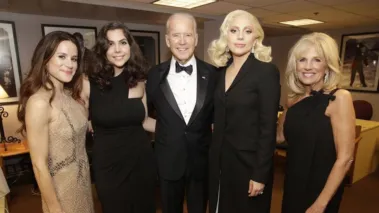
Throughout the 20th century, music in American culture played a crucial role in social and political movements. Folk music, in particular, became a soundtrack for change during the labor and civil rights movements. Artists like Woody Guthrie and Pete Seeger wrote protest songs that spoke to the injustices faced by working-class Americans. Guthrie’s "This Land Is Your Land" became an anthem for the common people, emphasizing equality and freedom.
In the 1960s, as political tensions rose due to the Vietnam War and the fight for civil rights, music became an outlet for protest and rebellion. The countercultural movement embraced rock and folk music, with artists like Bob Dylan, Joan Baez, and Jimi Hendrix becoming voices for a generation that sought peace, love, and social justice. Festivals like Woodstock in 1969 epitomized the convergence of music, culture, and activism, as thousands of people gathered to celebrate music while calling for an end to war and injustice.
Music in American culture has always reflected the country's social climate, from the blues and jazz eras to the rock anthems of the 1960s. Even today, music continues to be a powerful medium for political expression, with genres like hip-hop addressing issues of systemic racism, police brutality, and economic inequality. Artists like Kendrick Lamar, Beyoncé, and Childish Gambino use their platforms to challenge the status quo, proving that music remains a powerful force for change.
Technology in American Music

Long before modern AI burst on the music scene running machine learning algorithms to generate entirely new compositions, with unique melodies and harmonies, technological advancements of the 20th century dramatically transformed the origins of music in American culture. From the invention of the phonograph to the rise of streaming services, the way people consume music has shifted significantly. While early American music was passed down orally or through sheet music, the invention of the phonograph in the late 1800s allowed music to be recorded and shared on a much larger scale. Radio, which became widely available in the 1920s, further amplified the reach of popular music, making it accessible to millions of people.
The rise of television in the mid-20th century gave music an even greater cultural presence. Shows like "American Bandstand" introduced rock ‘n’ roll to young audiences across the nation, while programs like "The Ed Sullivan Show" helped launch the careers of iconic artists like The Beatles and Elvis Presley.
Today, the internet and streaming platforms have revolutionized how music is shared and consumed. Platforms like Spotify, Apple Music, and YouTube make it possible for people to access millions of songs at the click of a button, while social media allows artists to interact with their fans in real-time. These advancements have democratized the music industry, giving independent artists the ability to reach global audiences without the backing of major record labels.
Cultural Music Around the World
Music has long been a fundamental aspect of cultures across the globe, offering a window into the traditions, history, and identity of different societies. Cultural music around the world varies widely, from the powerful drum rhythms of Africa to the intricate melodies of East Asia. Each region’s musical traditions reflect its history, beliefs, and social structures, creating a rich and diverse tapestry of sound that unites and differentiates communities.
Africa
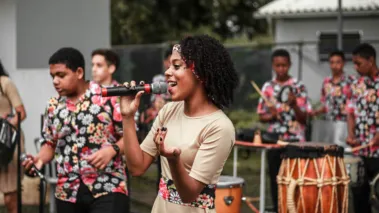
Rhythms of Tradition
Africa is home to some of the richest and most diverse musical traditions in the world. With its vast geographic and ethnic diversity, the continent offers a wide variety of musical styles, from the hypnotic beats of West African drumming to the melodic storytelling of East African string instruments. Percussion instruments like the djembe, conga, and talking drums are central to many African music traditions, often used in communal rituals, celebrations, and storytelling.
In West Africa, the griots, traditional musicians and historians, use music to preserve and transmit the oral history of their people. These musicians are vital in keeping alive the heritage of communities, blending music with narrative to educate future generations. Meanwhile, in North Africa, music is heavily influenced by Arab traditions, featuring instruments like the oud and the qanun. The Gnawa music of Morocco blends African rhythms with Islamic spiritual chants, creating a unique fusion that has influenced genres beyond the continent.
Across Sub-Saharan Africa, music is deeply tied to the spiritual and everyday lives of the people. In regions like Botswana, traditional Tswana music incorporates string instruments like the segaba, while Morocco blends African, Arabic, and Andalusian sounds. Each musical tradition speaks to the identity and history of the region, offering a rhythm for ceremonies, rituals, and celebrations.
Asia
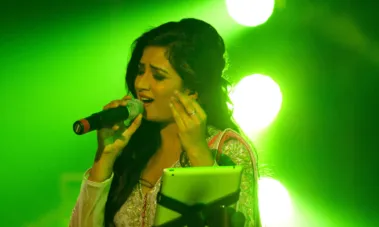
Harmonies of the East
Asia, the largest and most populous continent, is also the most musically diverse. The region's musical traditions are deeply rooted in spirituality, philosophy, and social practices. From the meditative sounds of Tibetan chanting to the upbeat rhythms of Indian Bollywood, cultural music around the world would not be complete without a look at Asia.
Indian music is one of the most complex and ancient musical traditions in the world. Divided into two main traditions—Hindustani from the north and Carnatic from the south—Indian music is characterized by its use of ragas (melodic frameworks) and talas (rhythmic cycles). Instruments like the sitar, tabla, and sarangi are integral to this tradition, and Indian music has had a profound influence on both Eastern and Western musical styles. In addition to classical music, Bollywood music, with its upbeat rhythms and catchy melodies, is hugely popular, making India a significant player on the global music scene.
Further east, Chinese traditional music emphasizes harmony and melody, often associated with spiritual practices and the cycles of nature. Instruments like the guzheng, pipa, and erhu produce delicate, flowing sounds that evoke nature and balance. Meanwhile, in Japan, traditional music is deeply connected to performance arts like Noh and Kabuki, where music enhances the storytelling of ancient folklore and historical events.
Southeast Asia, with its rich cultural diversity, also boasts unique musical traditions. Gamelan, the traditional ensemble music of Indonesia, consists of a range of instruments, including metallophones, xylophones, and gongs, creating mesmerizing, trance-like rhythms that are central to religious ceremonies and community gatherings. Each of these musical traditions highlights the deep connections between music, spirituality, and culture across Asia.
Europe

Folk Roots and Classical Innovations
European music has long influenced global music trends, particularly through the spread of classical music traditions. However, before the rise of classical music, folk traditions dominated the cultural music of Europe. These folk traditions, which vary by region, reflect the rural lives and agricultural cycles of the people.
In Spain, the passionate rhythms of flamenco, with its use of guitar, clapping, and singing, speak to the soul of Andalusian culture. Flamenco, with its emotional intensity and improvisational elements, is a musical style that has both preserved and evolved over time, remaining a key part of Spanish cultural identity. Similarly, Irish folk music, with its lively fiddle tunes and melancholic ballads, has remained central to Ireland's cultural identity, often played at social gatherings and celebrations.
Eastern Europe also has a rich tradition of folk music, with the Roma people, in particular, contributing to the musical landscape with their lively, emotive performances. Instruments like the violin, accordion, and cimbalom are often used in Roma music, which has influenced many classical and popular music genres throughout Europe.
Europe’s classical music tradition, which emerged during the Renaissance and Baroque periods, has had a lasting impact on Western music. Composers like Mozart, Beethoven, and Bach transformed the musical landscape with symphonies, concertos, and operas that continue to be performed worldwide. These classical forms, while distinct from folk traditions, are equally embedded in European culture, demonstrating the continent’s diverse musical heritage.
Latin America

Rhythm and Dance
Latin American music is known for its vibrant energy, rhythmic complexity, and connection to dance. Much of the music in Latin America combines Indigenous, African, and European influences, resulting in a rich variety of styles that are unique to the region. The music of Latin America is often closely tied to dance, with genres like salsa, samba, and tango being famous worldwide.
In Cuba, for example, salsa, mambo, and cha-cha-cha are characterized by their infectious rhythms and lively beats, often accompanied by brass instruments, percussion, and vocals. These genres are not only popular in Cuba but have also gained international fame, influencing music and dance cultures around the world. Similarly, the tango, born in the streets of Buenos Aires, Argentina, is known for its dramatic flair and sensuality, making it one of the most iconic dances in Latin America.
In Brazil, samba and bossa nova reflect the country’s diverse cultural heritage. Samba, with its fast-paced, percussive rhythms, is synonymous with Carnival, the country’s most famous festival, where music and dance come together in a celebration of Brazilian culture. Meanwhile, bossa nova, a more laid-back, jazzy style of music, gained international popularity in the 1960s, with artists like João Gilberto and Antonio Carlos Jobim leading the way.
Throughout Latin America, music is more than just entertainment—it is a way of life. From the panpipes of the Andean highlands to the mariachi bands of Mexico, music plays a central role in both religious and social traditions, reflecting the region’s unique blend of cultures.
Middle East

The Melodic Bridge
The Middle East has a rich musical tradition that spans thousands of years. The region’s music is characterized by its use of microtones, intricate melodies, and complex rhythms. Music in the Middle East is often modal, based on specific scales known as maqam, which differ from the Western tonal system. Instruments like the oud, qanun, and ney are central to the music of this region, producing a sound that is both haunting and beautiful.
Music in the Middle East is deeply connected to poetry and storytelling. In Arabic music, for example, the singer plays a crucial role in interpreting the poetry of the lyrics, often improvising to enhance the emotional impact of the performance. This improvisational tradition is also seen in Persian classical music, where the musician uses the set structure of a dastgah but adds their own personal expression through ornamentation and improvisation.
Final Thoughts
The global influence of music is undeniable, with each culture contributing its own distinct sound to the world stage. From the rich tapestry of music in American culture, where genres like jazz and rock have left an indelible mark, to the diverse rhythms of cultural music around the world, the role of music goes beyond entertainment—it’s a vital thread that weaves societies together. Whether through the political power of protest songs or the communal joy of traditional celebrations, the impact of music on society continues to shape how we understand and connect with one another.



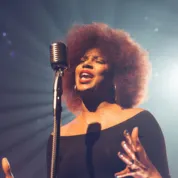

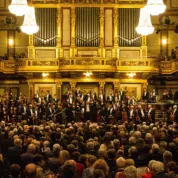

Leave a Reply!